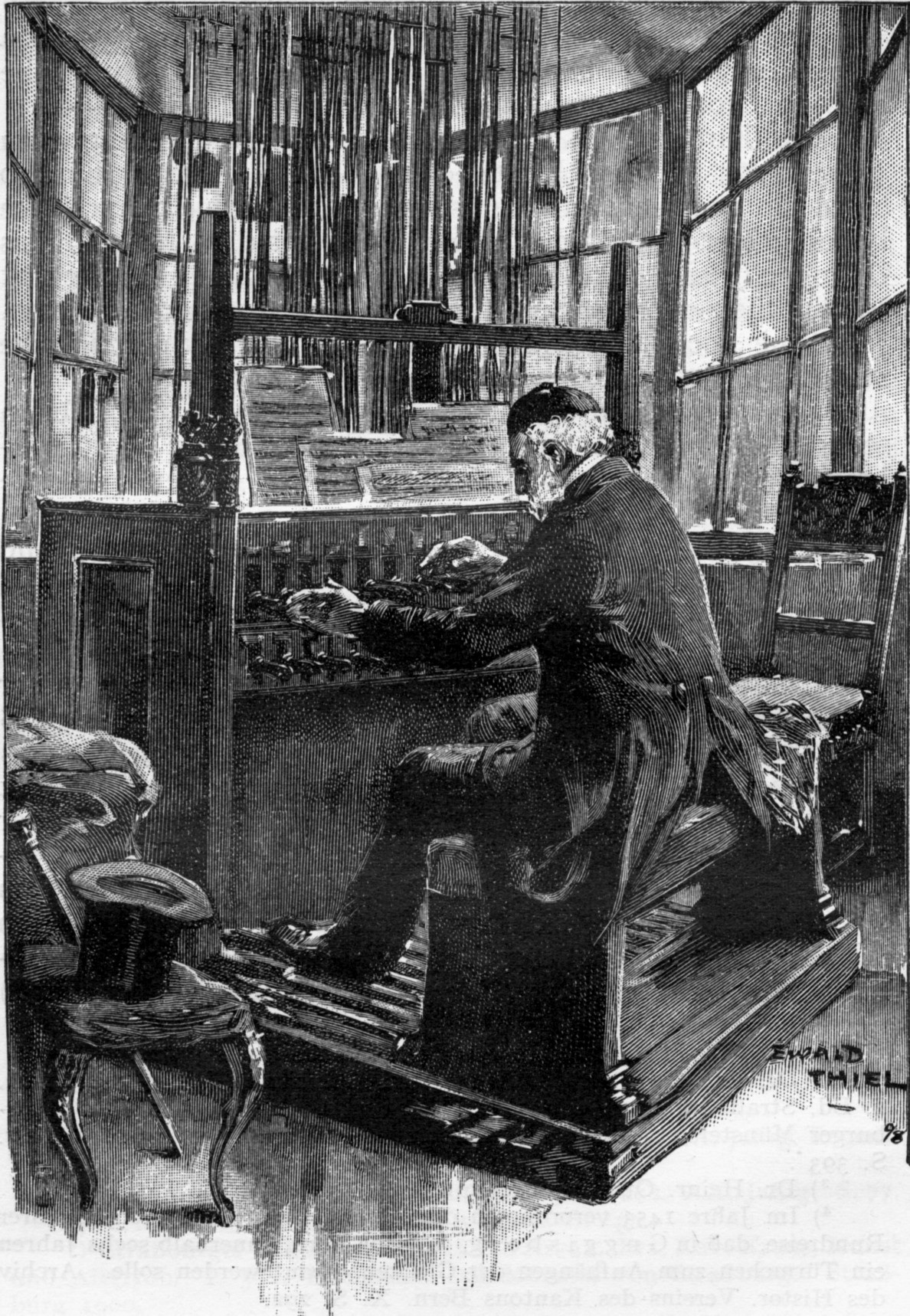In
1701 the first Prussian King Frederick I. commanded
his court founder Johannes Jacobi to cast 37 bells for
a carillon. The architect then in charge of the Berlin
City Palace, Andreas Schlüter, was commanded to
rebuild its dilapidated Mint Tower and raise it to a
height of 98 meters. The project failed however and in
1713 the new king, Frederick William I., donated the
carillon to the Parochial church. Jacobi's bells were
judged to be of poor quality and were replaced in 1717
by a set of new ones cast by the Amsterdam founder Jan
Albert de Grave. In 1721 Frederick William I. ordered
an automatic chime of 35 bells from de Grave for the
new Garrison Church in Potsdam. In 1735 five large
bass bells were added to the set and they were
installed as a carillon in the second and much larger
Garrison Church.
Starting in 1797 the song "Üb' immer Treu' und
Redlichkeit" and the chorale "Priase to the Lord" were regularly
played by the automatic and came to symbolize
Potsdam.
The carillons of Berlin and Potsdam were played regularly before and after the church services, on the birthdays of the members of the royal family and on special occasions such as the Russian Tsar Alexander's visit to Berlin. The carilloneurs of Berlin and Potsdam were especially active during the 1920s and 1930s. In Berlin Hans Siepert, Reinhold Graßnick and Wilhelm Bender played additional concerts accompanied by brass instruments and on Wednesdays, in the evenings while the tower was lit up and for the Olympic Games in Berlin in 1936. The Potsdam carillonneur Otto Becker performed every Thursday for the tourists and a few records were made of his playing.
The Second World War put an end to the concerts on the old carillons in Berlin und Potsdam. In May 1944 the Parochial Church was bombed and only two bells survived well enough to be reinstalled as a small peal in the ruins. The Potsdam Garrison Church and its carillon were destroyed during the final weeks of the war and its ruins were cleared away in 1968. In the coming years the tower of the Berlin Parochial Church is scheduled to be reconstructed and equipped with a new carillon so that the once famed "Singing Clock" can once again take its place in the centre Berlin. A copy of the original Potsdam Garrison Church is also set to be built in the near future and will also be crowned with a new carillon.
The Berlin Parochial Church |
The Potsdam Garrison Church |
The carillons of Berlin and Potsdam were played regularly before and after the church services, on the birthdays of the members of the royal family and on special occasions such as the Russian Tsar Alexander's visit to Berlin. The carilloneurs of Berlin and Potsdam were especially active during the 1920s and 1930s. In Berlin Hans Siepert, Reinhold Graßnick and Wilhelm Bender played additional concerts accompanied by brass instruments and on Wednesdays, in the evenings while the tower was lit up and for the Olympic Games in Berlin in 1936. The Potsdam carillonneur Otto Becker performed every Thursday for the tourists and a few records were made of his playing.
 Richard Thiele, carillonneur of the Berlin Parochial Church 1890 - 1902 |
Eugen Thiele, carillonneur of the Berlin Parochial Church 1903 - 1917 |
The Second World War put an end to the concerts on the old carillons in Berlin und Potsdam. In May 1944 the Parochial Church was bombed and only two bells survived well enough to be reinstalled as a small peal in the ruins. The Potsdam Garrison Church and its carillon were destroyed during the final weeks of the war and its ruins were cleared away in 1968. In the coming years the tower of the Berlin Parochial Church is scheduled to be reconstructed and equipped with a new carillon so that the once famed "Singing Clock" can once again take its place in the centre Berlin. A copy of the original Potsdam Garrison Church is also set to be built in the near future and will also be crowned with a new carillon.